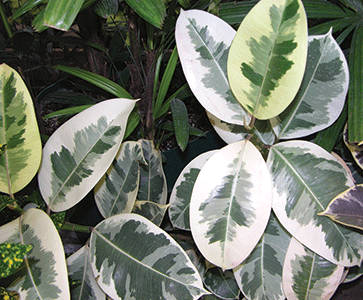Irises—tall bearded beauties—are easy to grow
It’s February and my iris need feeding. Its one of the tips I received about growing these show-stopping beauties.
In my earliest gardening days, I never planted iris, mostly because my mother didn’t like them, but also because I wasn’t particularly fond of the ones I’d seen—those plain purple and dirty gold ones that could be seen cropping up on roadsides here and there.
But that was before I moved into a neighborhood where my new neighbors just happened to be members of the local Iris Society.
When they took me into their backyard, I discovered an iris paradise. It was a jaw-dropping kaleidoscope of color. Tall Bearded (sometimes called German) iris of varying heights and every shade imaginable—blues, purples, pinks, pale yellows, whites, oranges and everything in between—filled the beds that bordered their fence.
They took me on a tour and introduced these statuesque beauties by name. When we got to “Beverly Sills,” I was hooked. All I could think when I saw and smelled this fragrant peachy pink flower with delicate frilly falls (the cascading petals) and its slightly orange beard (the fuzzy caterpillar like hairs growing from the upper base of the falls) was—Hello gorgeous.
My new neighbors helped me build an iris bed (in full sun that the flowers prefer) and told me anyone could grow iris; that all they needed besides full sun is a good freeze in the winter so they can go dormant, no fussy mulch and a dose of fertilizer (one low in nitrogen) in February and again in August. It sounded like the perfect flower for a single, working mother.
The first rhizomes they brought me to plant were, of course, “Beverly Sills.” Rhizomes are like a thick horizontal stem, similar to a bulb in that they store nutrients during the dormant season. Soon my neighbors had added others from their eclectic collection. The Tall Bearded varieties were their favorites, but gradually, rhizome by rhizome, I was learning there were dwarf and mid-sized Bearded varieties, some that would even re-bloom, and also Beardless types like Siberian, Japanese and Louisiana iris.
Even my mother began to like iris. How could she not?
My neighbors assured me they were all easy to grow, with only a few variations in their care:
Plant iris in full sun in late summer. Plant about 8-24 inches apart. (The closer together, the more often you will have to divide.) For an immediate clump effect, plant 3 rhizomes of the same variety with toes facing the center. Plant clumps 24 inches apart.
Do not plant Bearded iris too deep. The rhizome should be near the surface of the soil with the roots below.
Do not mulch Bearded iris; Beardless iris (except Siberian) don’t mind: they prefer moist soil.
Feed iris in February and August with a low nitrogen fertilizer such as 5-10-10 or 10-20-10. Water granular fertilizer in well.
Healthy green leaves should not be trimmed back from an established plant, but browned or diseased leaves should be removed.
Cut back the flower stems near the base of the plant after every flower bud has opened and finished blooming.
Divide irises every three to four years in late summer. Dig up the clump and discard the old bare center rhizome, which is actually dead. On the remaining rhizomes, cut back their foliage to about four to five inches and replant the best of the remaining rhizomes.
Share rhizomes. If you can’t plant now, put in pots in the shade and plant later in the fall.
I must admit, I don’t always follow these tips exactly and some years, not even at all. There have been some years when gardening just gets away from me. But iris are dependable beauties regardless of my neglect.
And now it’s been 30 years since my introduction and “Beverly Sills” has found her way into my garden every time I’ve moved. She’s still gorgeous—and proof that iris are easy to grow.

